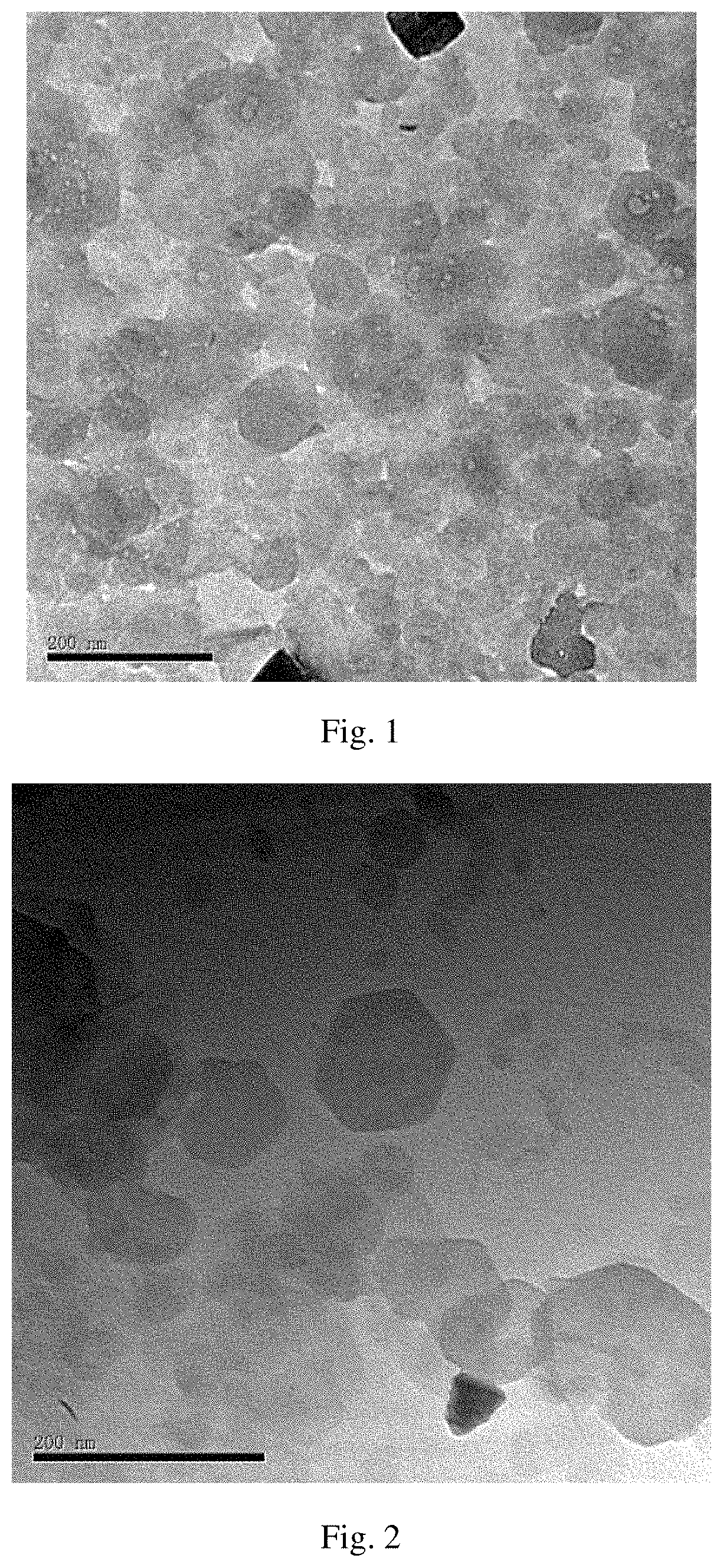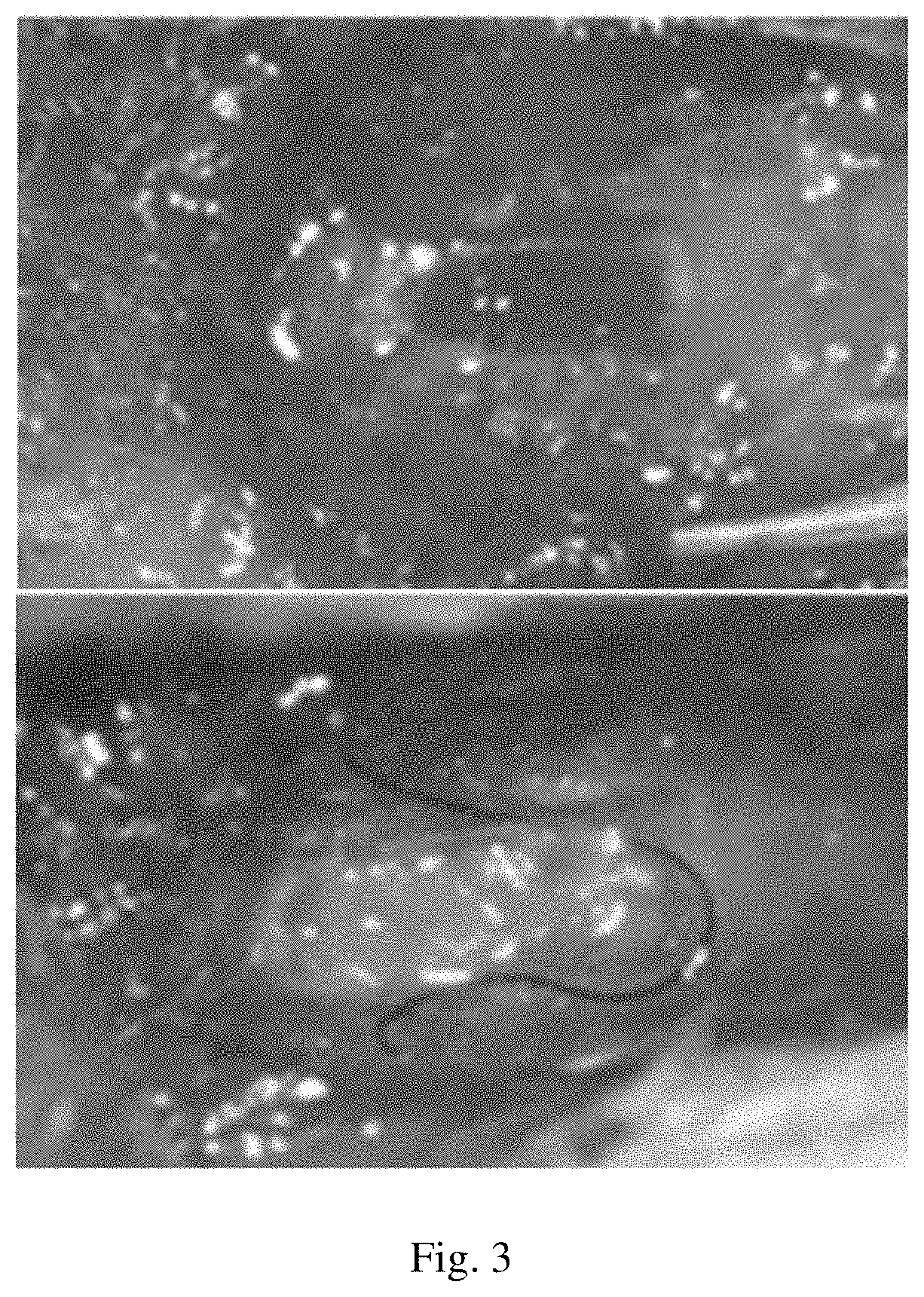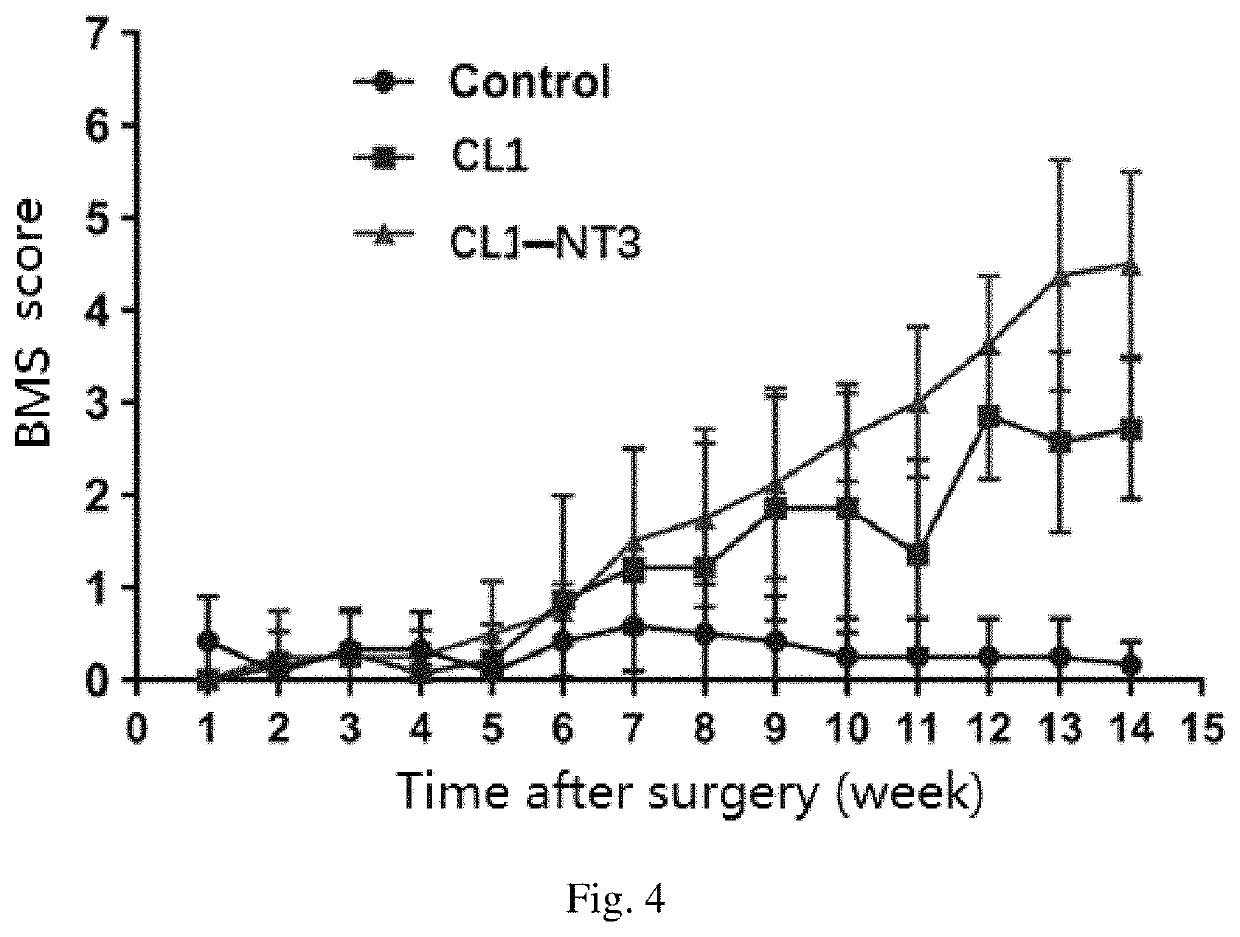Nano-layered dual hydroxide-biological factor combined system for promoting nerve regeneration to repair spinal cord injury
a biochemical factor and combined material technology, applied in tissue regeneration, pharmaceutical delivery mechanism, prosthesis, etc., can solve the problems of high cost and lower age, high incidence of spinal cord injury, high disability rate, etc., and achieve good biocompatibility, good controlled release effect, and optimized preparation parameters
- Summary
- Abstract
- Description
- Claims
- Application Information
AI Technical Summary
Benefits of technology
Problems solved by technology
Method used
Image
Examples
example 1
Preparation of Nano-Layered Double Hydroxide CL1
[0075]The procedure of CL1 synthesis was performed as follows. A total of 40 ml of a mixed metal salt solution of Mg(NO3)2.6H2O (1.536 g, 0.006 mol) and Al(NO3)3.9H2O (0.75 g, 0.002 mol) was prepared, and water was used as a solvent, wherein the molar ratio of Mg to Al was 1:1. 0.016 mol NaOH solution was prepared. In a N2 atmosphere, the mixed metal salt solution was added to the vigorously stirred NaOH solution, and the prepared suspension was transferred to a hydrothermal synthesis kettle, and removed after reacting at 100° C. for 18 h. Thereby, a CL1 nanoparticle suspension having a particle size of 20 to 200 nm was obtained. The synthesized CL1 was observed by transmission electron microscopy (FIG. 1) and presented a good hexagonal crystal structure, which is hexagonal. The synthesized CL1 nanoparticle suspension was placed in a centrifuge and centrifuged at 8500 rpm to form a soft gel.
example 2
Preparation of Nano-Layered Double Hydroxide CL1
[0076]The procedure of CL1 synthesis was performed as follows. A total of 40 ml of a mixed metal salt solution of Ca(NO3)2. 6H2O (0.006 mol) and Fe(NO3)3. 9H2O (0.002 mol) was prepared, and water was used as a solvent, wherein the molar ratio of Ca to Fe was 1:1. 0.016 mol NaOH solution was prepared. In a N2 atmosphere, the mixed metal salt solution was added to the vigorously stirred NaOH solution, and the prepared suspension was transferred to a hydrothermal synthesis kettle, and removed after reacting at 100° C. for 18 h. Thereby, a CL1 nanoparticle suspension having a particle size of 20 to 200 nm was obtained. The synthesized CL1 was observed by transmission electron microscopy and presented a good hexagonal crystal structure, which is hexagonal. The synthesized CL1 nanoparticle suspension was placed in a centrifuge and centrifuged at 8500 rpm to form a soft gel.
example 3
Preparation of Nano-Layered Double Hydroxide CL1
[0077]The procedure of CL1 synthesis was performed as follows. A total of 40 ml of a mixed metal salt solution of Cu(CO3)2.6H2O (0.006 mol) and Cr(CO3)3.9H2O (0.002 mol) was prepared, and water was used as a solvent, wherein the molar ratio of Cu to Cr was 1:1. 0.016 mol NaOH solution was prepared. In a N2 atmosphere, the mixed metal salt solution was added to the vigorously stirred NaOH solution, and the prepared suspension was transferred to a hydrothermal synthesis kettle, and removed after reacting at 100° C. for 18 h. Thereby, a CL1 nanoparticle suspension having a particle size of 20 to 200 nm was obtained. The synthesized CL1 was observed by transmission electron microscopy and presented a good hexagonal crystal structure, which is hexagonal. The synthesized CL1 nanoparticle suspension was placed in a centrifuge and centrifuged at 8500 rpm to form a soft gel.
PUM
| Property | Measurement | Unit |
|---|---|---|
| temperature | aaaaa | aaaaa |
| particle size | aaaaa | aaaaa |
| dry weight | aaaaa | aaaaa |
Abstract
Description
Claims
Application Information
 Login to View More
Login to View More - R&D
- Intellectual Property
- Life Sciences
- Materials
- Tech Scout
- Unparalleled Data Quality
- Higher Quality Content
- 60% Fewer Hallucinations
Browse by: Latest US Patents, China's latest patents, Technical Efficacy Thesaurus, Application Domain, Technology Topic, Popular Technical Reports.
© 2025 PatSnap. All rights reserved.Legal|Privacy policy|Modern Slavery Act Transparency Statement|Sitemap|About US| Contact US: help@patsnap.com



